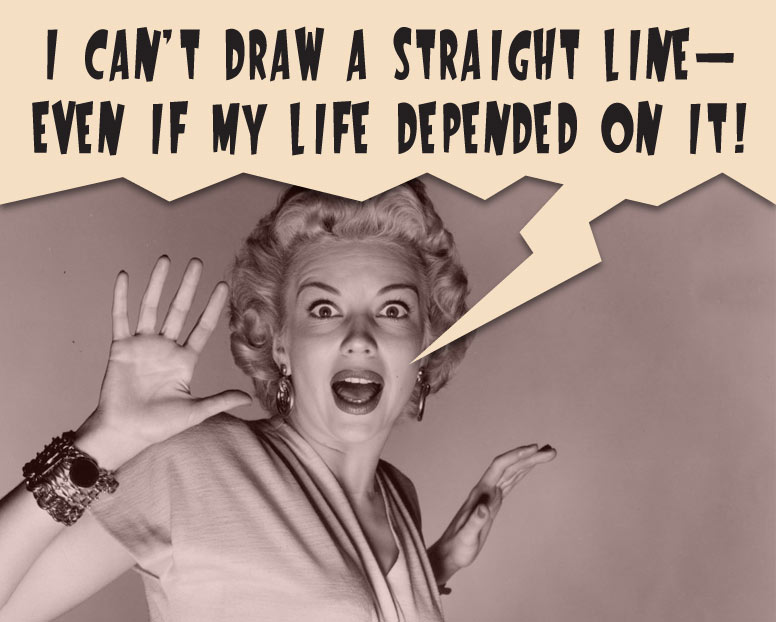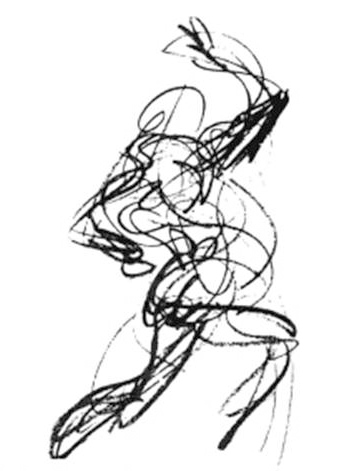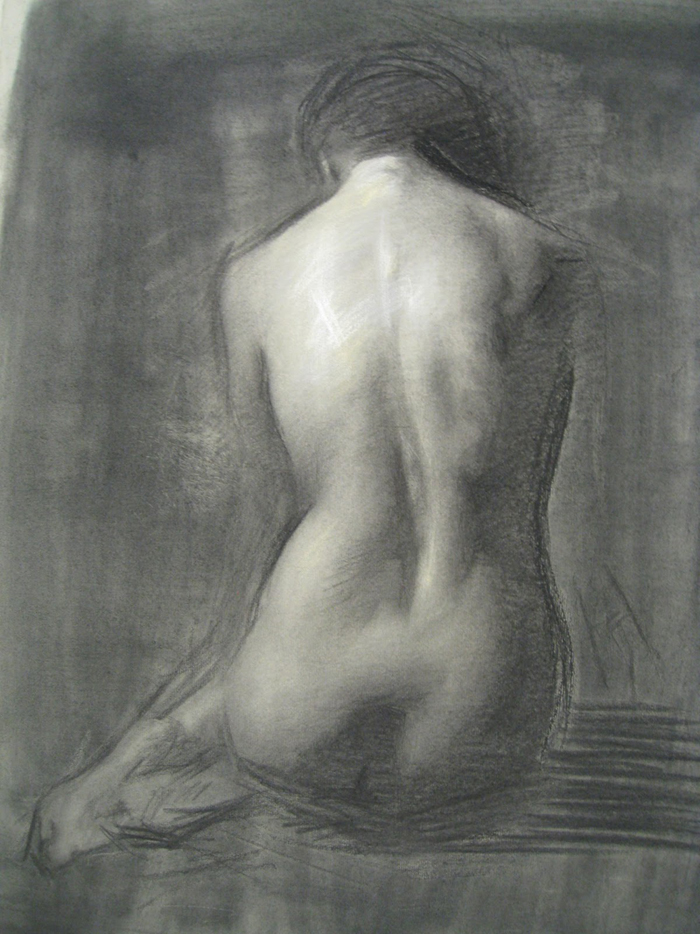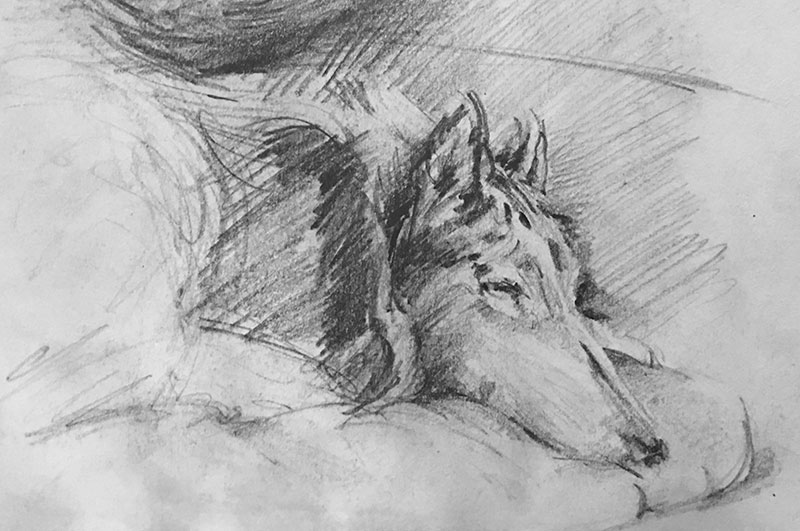
Autumn brings us Halloween, the time of year when our thoughts are haunted by ghosts and goblins. But for those of us who are learning to draw, the zombies of perfectionism can be the most terrifying creatures—every day of the year!
Our notion of having to make the “perfect drawing” can dig its way out of the graveyard of unfinished childhood drawings, spawning the zombies of perfectionism. These unrelenting, critical zombies can stalk us throughout life. They are the vivid, sometimes painful, memories of being told not to make mistakes while we draw. “The sky isn’t green, it’s blue!” commands a third grade teacher. “That doesn’t even look like a dog!” criticizes a high school classmate from across an art room filled with laughter. While growing up, our parents and teachers constantly pushed us to get perfect grades. Nowadays we feel compelled to stream a Facebook timeline reflecting a perfect life. And so it goes, we think we have to make perfect drawings.
Perfectionism lurks in the corridors of the mind and can devour our simplest desire to draw carefree lines and shapes on paper. According to Wikipedia, “perfectionism is a personality trait characterized by a person’s striving for flawlessness and setting excessively high performance standards, accompanied by overly critical self-evaluations and concerns regarding others’ evaluations.” Sounds pretty scary.
In drawing, there are positive and negative aspects to perfectionism. It can motivate us to draw a realistic depiction of an object we’re looking at. But it can also drive us to attempt achieving the unattainable ideal of drawing an exact replication of the object. When perfectionists don’t reach their goals in making the perfect drawing, they can become frustrated and eventually stop drawing altogether. Many of my adult and youth students have had to overcome haunting, stifling memories of trying to draw in a world dominated by the convention of making everything look flawless.
I’m the first to say that you shouldn’t hurry your work or to draw sloppily. However, if you’re aiming for realism in your work, it’s important to learn to enjoy sketching swiftly, confidently, and with purpose. Here are 4 basic tactics to help you stop perfectionism’s rigid dominance from creeping into your drawings even before laying down the very first pencil strokes.
Defeating the Zombies of Perfectionism
Embrace Mistakes: Even the most accomplished drawing artists make mistakes—all day long! In his book The Natural Way to Draw Kim Nicolaides states, “Unfortunately most students, whether through their own fault or the fault of their instructors, seem to be dreadfully afraid of making technical mistakes. You should understand that these mistakes are unavoidable. The sooner you make your first five thousand mistakes, the sooner you will be able to correct them.” To err is human. Finding enjoyment in learning from your mistakes is anathema to perfectionism—the zombies will retreat instantaneously to their graves.
Get Sketchy: Return to your childhood roots. Loosen your grip on the pencil, loosen up your line work on the paper, and revel in the sketchiness of drawing from life. To his beginning students Nicolaides said, “Don’t worry if for the first three months your studies do not look like anything else called a drawing that you have ever seen. You should not care what your work looks like as long as you spend your time trying. The effort you make is not for one particular drawing, but for the experience you are having—and that will be true even when you are eighty years old.”

” A gesture drawing is like scribbling rather than like printing carefully—think more of the meaning than of the way the thing looks.” —Kim Nicolaides
Interpret, Don’t Duplicate: When learning to draw, you’re not trying to recreate the landscape or figure you’re looking at, detail for detail. “Drawings are all based on observation: what we see and how we understand, formulate, and interpret this,” write Peter Stanyer and Terry Rosenberg in their book A Foundation Course In Drawing. “However, when you are making a drawing, bear in mind that you are not trying to reproduce “the truth” of what you see. Your aim should be to make an interpretation or expression from your observations and knowledge of the subject.” Juliette Aristides, author of Lessons in Classical Drawing agrees, “Fortunately, the goal of art has never been to duplicate nature, but to interpret it.”

Accuracy vs Dynamism: In the cool little book called The Exceptionally Simple Theory of Sketching George Hlavacs pinpoints a fatal flaw of perfectionism and learning to draw. Beginners concentrate on extreme accuracy over dynamic, fluid lines. “They draw slowly and with concentration. But because humans don’t have rulers, compasses and templates built on their hands, their slow lines never look dynamic and confident. Instead, they look crooked and tentative. In addition, lots of tiny inaccuracies become more prominent because of the erroneous desire to draw everything with one single line.” In his opinion, “Dynamism is much more important to the human eye than accuracy. We prefer a drawing that looks dynamic yet less accurate to a drawing that is more accurate yet less dynamic.”
This autumn tale is not without a taste of irony.

I remember a time, years ago, spent sketching through mistakes and correcting proportions on a study of my dog while she napped—a most challenging subject! After suppressing the zombies of perfectionism, my drawing composition finally fell together. Accepting flaws in accuracy, here and there, I stepped back to view my drawing. And with a slight Leonardo da Vinci accent, I declared with satisfaction, “Perfect!”
Draw on, fearless sketchers!
Related Post: Practice Failure
Rob Court
Latest posts by Rob Court (see all)
- Drawing With Friends - April 11, 2022
- Frozen in Time: Cellphone Users as Models to Draw - April 8, 2022
- Getting Out & Getting Real - June 20, 2021
- Life Lines: Sketching the Unseen World of Movement - June 20, 2021
- The Ups & Downs of Urban Sketching - May 9, 2021